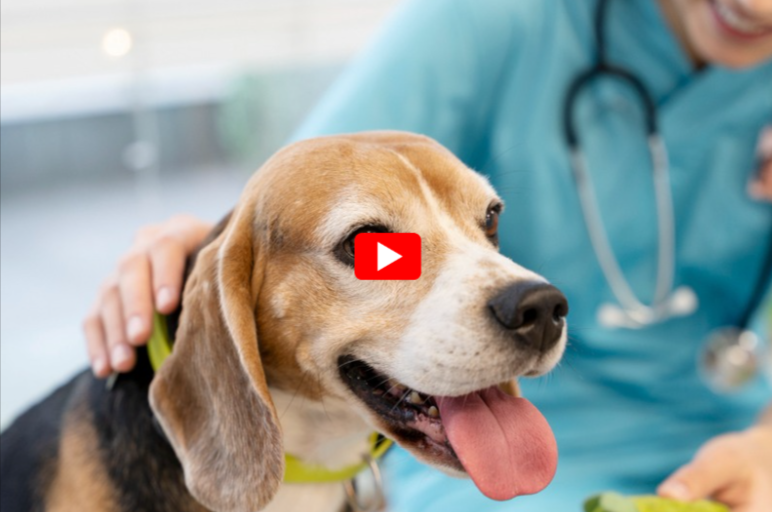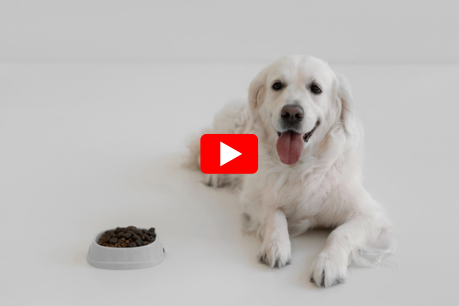Ringworm In Dogs: Causes, Symptoms, Treatment & Prevention
Ringworm in dogs is a widespread yet often misunderstood skin infection. Despite the alarming name, it is not caused by an actual worm but by a group of fungi known as dermatophytes.
Ringworm in dogs is a contagious fungal infection causing circular, scaly patches on the skin, often leading to hair loss and itching. Prompt care is key.
This infection targets the skin, hair, and nails and is highly contagious among animals and humans alike. Early identification and proper treatment are essential in managing the condition and preventing its spread.
What Is Ringworm in Dogs?
Ringworm, medically known as dermatophytosis, is a fungal infection affecting the outer layers of a dog’s skin, hair follicles, and occasionally their nails.
The fungi responsible for this infection thrive in warm, humid environments and can cause hair loss, scaly skin, and circular lesions.
Common strains include Microsporum canis, Microsporum gypseum, and Trichophyton mentagrophytes. Despite being called “ringworm,” no worm is involved in this infection.
How Do Dogs Get Ringworm?
Dogs can contract ringworm through direct contact with infected animals, humans, or contaminated objects.
Spores from the fungi can survive on surfaces such as bedding, grooming tools, toys, and furniture for several months.
Dogs that frequent public areas like dog parks, shelters, or kennels are at higher risk. Poor hygiene and compromised immunity further increase the likelihood of infection.
Risk Factors for Ringworm in Dogs
While any dog can develop ringworm, certain conditions increase susceptibility. Puppies and senior dogs with underdeveloped or weakened immune systems are more vulnerable.
Dogs with pre-existing skin conditions or injuries are also at higher risk. Additionally, living in multi-pet households, shelters, or areas with high humidity elevates the chances of infection.
Symptoms of Ringworm in Dogs
The symptoms of ringworm in dogs can vary, but typically involve hair loss and skin changes. Common signs include circular patches of hair loss with scaly, reddened borders.
These lesions usually appear on the face, ears, tail, or legs. The affected areas may be itchy, crusty, or inflamed.
In some cases, the infection affects the nails, causing them to become brittle or deformed. Not all infected dogs show visible symptoms, but they can still spread the fungus to others.
How Is Ringworm Diagnosed in Dogs?
Diagnosing ringworm requires veterinary evaluation. The vet may begin with a Wood’s lamp examination, which uses ultraviolet light to detect certain strains of fungi that fluoresce.
A fungal culture, considered the most accurate method, involves collecting hair or skin samples to encourage fungal growth in a lab setting.
Additionally, a microscopic examination of skin scrapings can reveal fungal spores. In rare, complicated cases, a skin biopsy might be necessary for confirmation.
Treatment Options for Ringworm in Dogs
Treatment for ringworm usually combines topical medications, oral antifungal drugs, and environmental cleaning.
Topical Treatments
Mild cases can often be managed with medicated shampoos containing miconazole, chlorhexidine, or ketoconazole.
Lime sulfur dips are effective, though their strong odor is off-putting to some. Antifungal creams or ointments can be applied directly to lesions.
Oral Antifungal Medications
Severe or widespread infections may require oral antifungal medications such as griseofulvin, itraconazole, or terbinafine.
These medications help eliminate the infection systemically but must be prescribed and monitored by a veterinarian due to potential side effects.
Environmental Cleaning
Since ringworm spores can survive in the environment for months, thorough cleaning is critical. Wash all pet bedding, toys, and grooming tools with hot water and disinfectant.
Vacuum floors, carpets, and furniture frequently to remove spores. Disinfect surfaces using a bleach solution (1:10 ratio) to kill lingering spores.
Can Humans Catch Ringworm from Dogs?
Yes — ringworm is a zoonotic disease, meaning it can spread from dogs to humans. People who come into close contact with infected pets can develop itchy, ring-shaped rashes on the skin.
Children, elderly individuals, and those with weakened immune systems are especially susceptible. Proper hygiene, including frequent hand washing and avoiding direct contact with infected areas, reduces the risk of transmission.
How to Prevent Ringworm in Dogs
Preventing ringworm involves maintaining your dog’s hygiene and living environment.
-
Regular grooming keeps your dog’s skin and coat healthy
- Frequently wash bedding, collars, and toys.
-
Limit your pet’s interaction with unknown animals, especially in public spaces like parks or shelters.
-
Quarantine new pets for a few weeks before introducing them to your home.
- Bathe your dog with vet-recommended shampoos, particularly if they’ve been exposed to risky environments.
-
Provide a balanced diet and adequate exercise to support a strong immune system.
Home Care and Management Tips
Managing ringworm at home involves isolating the infected dog to prevent the spread to other pets and family members.
Wear gloves when applying topical treatments or handling your pet. Regularly wash and disinfect all items your dog uses, including bowls, bedding, and toys.
Ensure that you complete the entire treatment course as prescribed by your vet, even if symptoms appear to improve early.
Conclusion
Ringworm in dogs, though concerning, is a treatable condition. Recognizing the signs early, seeking veterinary help, and following a structured treatment and cleaning regimen are key to managing this fungal infection.
With proper care, your dog can recover fully and return to a healthy, active life. Prevention, including good hygiene practices and responsible pet care, plays a crucial role in keeping this pesky skin condition at bay.
References Link
- Ringworm in Dogs
https://www.petmd.com/dog/conditions/skin/c_dg_dermatophytosis
- Ringworm in Dogs
https://vcahospitals.com/know-your-pet/ringworm-in-dogs
- Ringworm (Dermatophytosis) in Dogs
https://www.merckvetmanual.com/dog-owners/skin-disorders-of-dogs/ringworm-dermatophytosis-in-dogs
- Ringworm in Dogs and Cats
https://veterinarypartner.vin.com/default.aspx?Id=4951439&pid=19239



